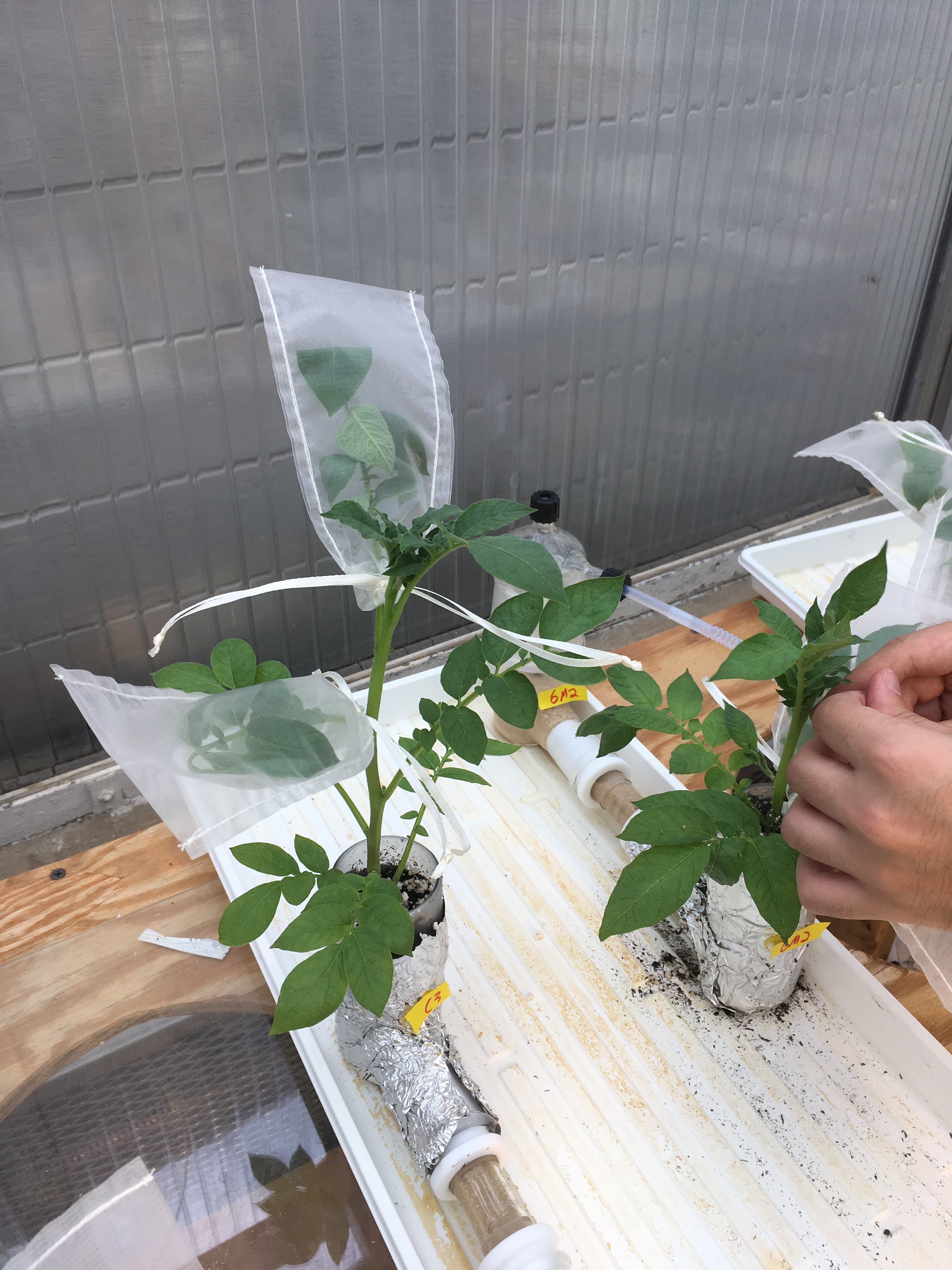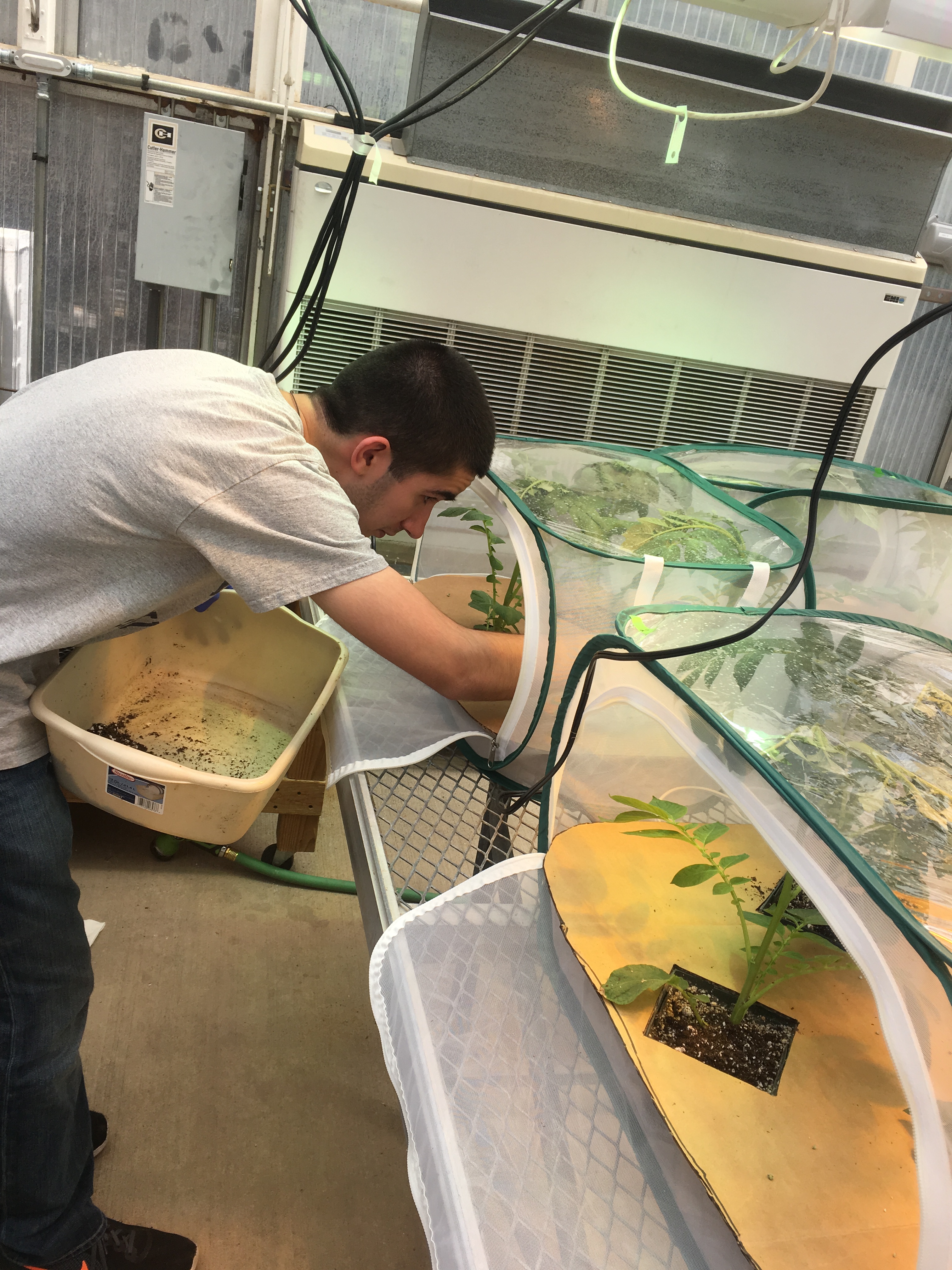Our lab recently published a paper in the journal Functional Ecology investigating the influence of chemical cues from entomopathogenic nematodes on plant defenses and herbivore behavior. (Helms et al. 2019)

We found that insect cadavers infected with entomopathogenic nematodes (EPN) produce characteristic odors different from those of uninfected dead insects. We also found that potato plants responded to the presence of these predatory nematodes or their odors by enhancing defenses that reduced performance of Colorado potato beetles. Our findings also revealed that female Colorado potato beetles laid fewer eggs on plants when odors from entomopathogenic nematodes were present, indicating they detected these cues as warning of a threat to the performance and survival of their offspring. These findings suggest that chemical cues from entomopathogenic nematodes enhance plant defenses and deter insect herbivores. By linking plant detection of chemical cues from organisms that play a beneficial role in their ecology, with herbivore detection of cues from their natural enemies, we can gain additional insight into the complexity of adaptations in interactions among organisms at different trophic levels.


Feeding bioassay with Colorado potato beetles on potato plants exposed to EPN chemical cues and William Grisales setting up an oviposition choice test with female Colorado potato beetles.
Recent Comments